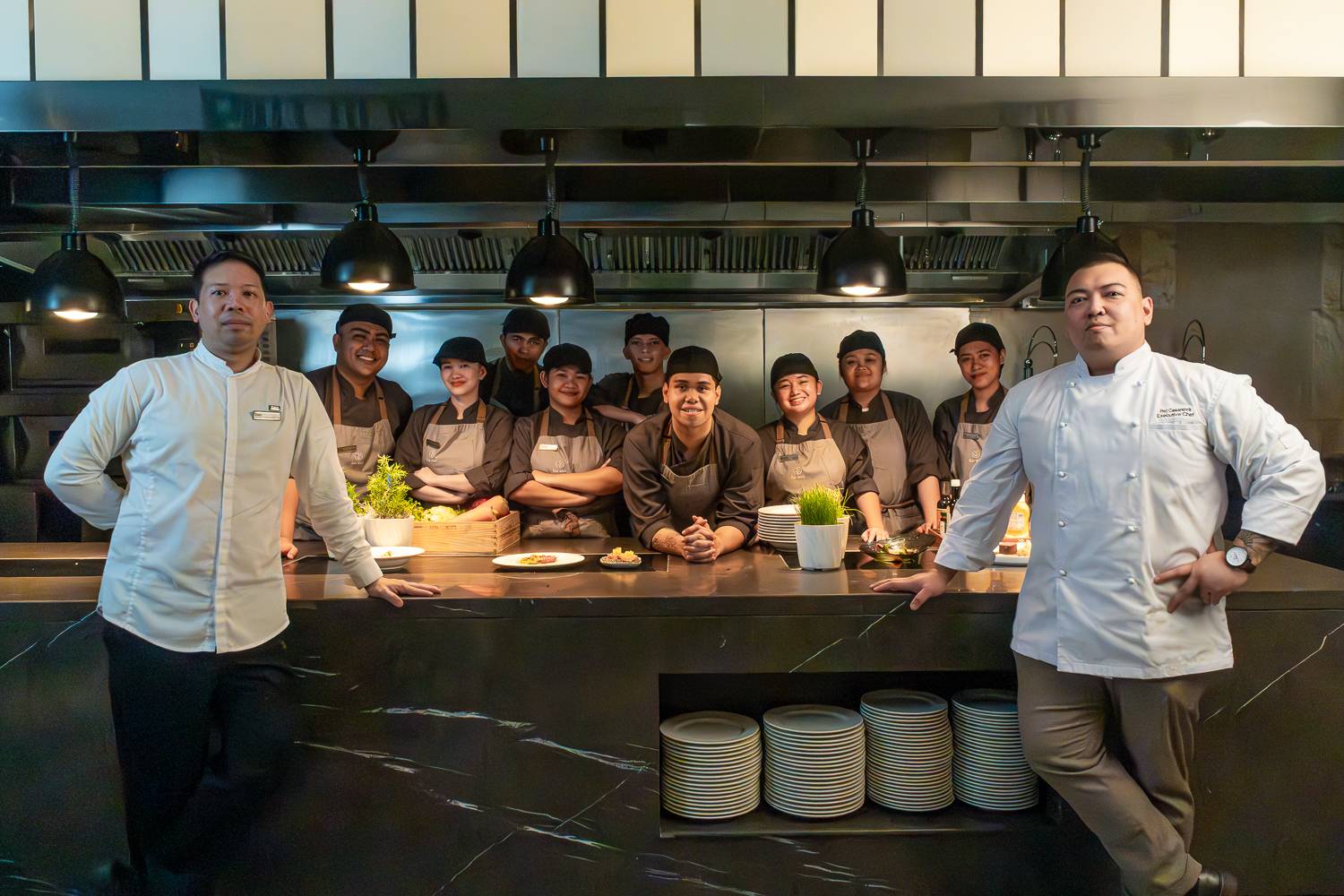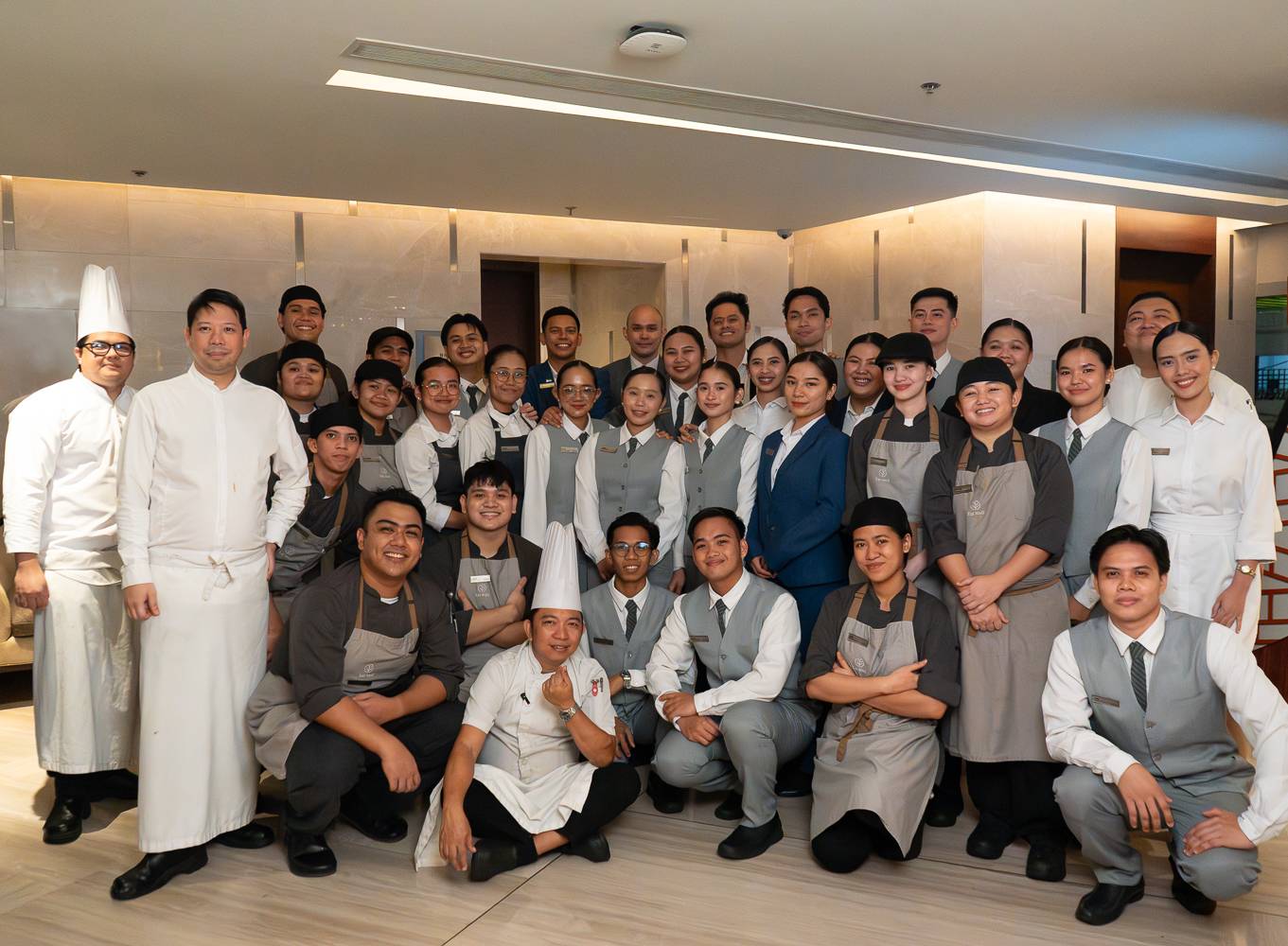From Teamwork to Tree Work: 600 Seeds of Hope Planted
This might not be the typical expat blog, written by a German expat, living in the Philippines since 1999. It's different. In English and in German. Check it out! Enjoy reading! Dies mag' nun wirklich nicht der typische Auswandererblog eines Deutschen auf den Philippinen sein. Er soll etwas anders sein. In Englisch und in Deutsch! Viel Spass beim Lesen!
You plan to move to the Philippines? Wollen Sie auf den Philippinen leben?
Ja, es gibt tonnenweise Webseiten, die Ihnen sagen wie, warum, vielleicht warum nicht und wann Sie am besten auf die Philippinen auswandern könnten. Ich möchte Ihnen in Zukunft "zwischen den Zeilen" einige zusätzlichen Dinge berichten und erzählen. Viel Spass beim Lesen und Gute Unterhaltung!
Total Pageviews

Thursday, May 15, 2025
From Teamwork to Tree Work: 600 Seeds of Hope Planted
A dish for every continent—even Antarctica

The kitchen at Seasonal Tastes in The Westin Manila seemed particularly lively that evening, with interns from various universities huddling and fussing over vibrant plates of internationally inspired cuisine.
Select guests were treated to a preview of “Culinary Showcase,” a one-night-only charity dinner for the benefit of Save the Children Philippines. The seven-course degustation menu, to be served on May 19 at 7 p.m., marks the culmination of the students’ Mentor-Mentee Program with the award-winning hospitality team.
For around two months, graduating students from Bulacan State University, De La Salle Lipa, Lyceum of the Philippines, National Teachers College, Our Lady of Fatima University, Polytechnic University of the Philippines, and University of Santo Tomas learned the ropes of putting together a dinner event—from creating the menu to serving the dishes, and everything in between.

“Each intern is assigned a role and responsibility in the planning and execution. These include leadership roles, such as executive and sous-chefs, restaurant managers, and more,” Westin Manila director of operations Grace Weihrauch said in a statement.
Led by the evening’s executive chef, Tristan Palmes, diners get to journey through the continents for P3,300 per person without ever having to leave their tables.

The South American amuse bouche proves petite but potent. The plant-based ceviche (seaweed-infused watermelon, cilantro aioli, and pickled chayote) teases the palate and awakens the appetite with its frisky combination of light and crunchy, peppery, and citrusy. However, the one-bite wonder is gone too soon, leaving guests ready for more.
The Australian moss beef tartare serves subtlety on a plate: the slight sweetness from the herbed crumble dusted over raw minced tenderloin balancing with the hit of tang coming from pickled vegetables and lemon gel, and delicate sweet-bitterness from the tarragon aioli. The Vermont corn and chicken chowder representing North America has a sweetness that hits the back of the throat, but which the chicken mousseline in sweet corn glaze and whipped cream cheese are able to temper.

Local tastes
The team went local for Asia with ginataang sugpo at kalabasa. The deconstructed version of the Filipino viand plays with proportions: The prawn is huge and juicy, the thick sauce reduced to a slather of mild coconut and ginger flavors. The delicate kangkong crisps are a fleeting yet curious footnote.
The Antartica-inspired palate cleanser is a refreshing cucumber and mint sorbet, served in an ice bowl. Super refreshing in different ways, it’s best to finish the spoonful of lemon granita with basil gel and oil before it melts. But that’s hardly a problem with the lively dance of flavors that leaves one scraping the bottom of the ice bowl for more.


The beef peri-peri is paired with the trinity of African sauce: smoky yet spicy, cilantro with a kick, and a delicious citrus-garlic dip. The tamarind jus makes for a delectable addition for the sous vide grainge beef rump medallion that’s tender on the inside but has a bit of a chew on the outside. Intriguingly, each element of this dish is actually able to shine on its own—even the couscous and side vegetables.
Guests are brought to Europe for the final course with an interactive dessert. Spiced Rico pear poached in red wine encased in pear-shaped chocolate sits atop a faux plate that diners must break, revealing the rest of the treat. The mix of textures and sweetness combines so many elements, each spoonful creating a different experience.

“We want the guests to experience the comfort food of every continent,” Palmes told Lifestyle, adding that the “Culinary Showcase” team planned the menu with the guidance of Westin Manila’s executive chef Rej Casanova and executive sous chef Dale Yulo Sy.
“It’s not easy to make multiple cuisines that will complement each course. From South America to Europe, even the Antarctica-inspired dish was really something refreshing,” added Casanova.
Visit westinmanilahotel.com for details; book a table via qrco.de/CulinaryShowcase.
How is Deutsch considered one language despite the presence of various dialects in German-speaking countries like Switzerland, Austria, and Belgium?

Un tipo ordinario. An ordinary guy
Deutsch, or German, is definetely one language. Come and see.
However, it is regarded as a polycentric language, meaning that has more than one standard. At least three standards can be identified: German of Germany, German of Austria, and German of Switzerland. They do not differ much, but are clearly recognizeable.
Then, you have some regional variants, even within Germany, where a Brötchen (bread roll) in much of the South becomes a Semmel, but that’s usual in national languages, and it does not minimally question the fact that German is one language.
Finally, you have German regional languages, spoken dialects which are not to be seen as separate languages from a socio-linguistic standpoint, however might be regarded as separate languages from a purely linguistic point of view: main ones in my knowledge are Low German (Plattdüutsch), Austro-Bavarian, and Swiss-German. Recently (1984), one of those regional languages (Luxembourgish) has been ‘promoted’ to full language, being standardized and becoming an official language of Luxembourg.
The different standards (with variants) of the German language. Not to be confused with regional languages (e.g. Swiss-German) or separate languages (e.g. Luxembourgish).
Why are German and English such different languages, if they both have an anglo-saxon origin?

They don’t both have an Anglo-Saxon origin.
The Angles and Saxons both spoke closely related Low Germanic dialects that were on a close continuum with Friesian, whereas Modern Standard German is based on High German, spoken much further South.
Add the that a heavy Norse (North Germanic) influence on English followed by the massive impact of Norman French and it’s no wonder English is such a weirdo in the Germanic family of languages.
ANYTHING IS ACCEPTABLE
There are no rules for behavior, dress, etc. Today, in terms of clothing, almost anything goes, but they recall when the dress code was strictly formal.
Good authors too who once knew better words now only use four-letter words writing prose, anything goes.
The world has gone mad today, and good's bad today, and black's white today, and day's night today, when most guys today, that women prize today, are just silly gigolos.
And though I'm not a great romancer, I know that you're bound to answer when I propose, because anything goes.
Fertilizer and its problems are known, but who really cares? Pesticides and their problems are very well known too, but who really cares? Anything goes? How do we handle major consumers of water managing water resources? Are we overusing groundwater?
Climate change, greenhouse-effect, gases that pollute the atmosphere, acid rains, and biodiversity are foreign words to these people, who continue to destroy our globe and provoke the next natural disaster. The above-mentioned brochure, mentioning the Top 30 Environmental Issues in the 21st Century, is not the only written examination or rebuke. I wish and pray for many followers. For our next generations!
Dying for a Paycheck
I have experienced it many times. I have written about it many times. Nothing changed yet. Of course not!
Fact is, nowadays, the modern workplace can inflict dangerous levels of stress on employees even more than decades ago. Jeffrey Pfeffer, author of "Dying for a Paycheck" , argues that these practices don’t help companies – and warns governments are ignoring an emerging public health crisis.
Jeffrey Pfeffer is not the only one. Hundreds more followed Pfeffer's footsteps.
An Uber software engineer making a six-figure income killed himself in 2016, with his family blaming workplace stress. A 21-year-old Merrill Lynch intern collapsed and died in London after working 72 hours straight. When Arcelormittal closed a steel plant that it had taken over, a 56-year old employee died of a heart attack three weeks later. His family said it was the shock. And the European Agency for Safety and Health at Work has reported that over half of the 550 million working days lost annually from absenteeism “are stress related”.
In 2015, an analysis of almost 300 studies found that harmful workplace practices were as bad for mortality, and as likely to lead to a physician-diagnosed illness, as second-hand smoke, a known – and regulated – carcinogen.
Harmful workplace practices include things like long working hours, work-family conflict, economic insecurity arising from job losses and not having regular or predictable work hours, an absence of job control and, in the US, not having health insurance.
Your supervisor is more important to your health than your family doctor. That's not my quotation but by Bob Chapman, CEO of Barry-Wehmiller.
The workplace is making people sick and even killing them – and people should care. With rising health-care costs all over the world, the workplace has become an important public health problem. “According to the Mayo clinic, your supervisor is more important to your health than your family doctor,” Bob Chapman, CEO of the manufacturing firm Barry-Wehmiller, told the entire world.
The World Economic Forum estimates that some three-quarters of health-care spending worldwide is for chronic disease and non-communicable diseases account for 63 percent of all deaths. Chronic disease comes from stress and the unhealthy behaviours such as smoking, drinking, taking drugs and overeating that stress induces. Numerous surveys show that the workplace is a leading cause of stress, and it is thus one important cause of the healthcare crisis.
The aptly-named American Institute of Stress claims that workplace stress costs the American economy some $300bn each year. A paper I co-authored in a leading peer-reviewed journal estimated that there were 120,000 extra deaths annually in the US from harmful management practices, and that extra health-care costs were $190bn each year. That would make the workplace the fifth leading cause of death, worse than kidney disease or Alzheimer’s. In the UK, the Health and Safety Executive reported that 12.5 million working days were lost from work-related stress, depression or anxiety in 2016-2017.
Work practices that are bad for people don’t even help the company. Very clear. But who cares?
None of this is necessary, because the work practices that are bad for people don’t help the company, either. Long working hours are negatively related to per-hour productivity at both the national and industry level. Although it may seem counter intuitive, layoffs or redundancies do not improve organisational performance and often drive the best employees to leave, and because of direct costs such as severance and indirect costs such as losing people with strong relationships with customers, frequently do not even save money. For decades research has shown that giving people more control over how and when they do their jobs increases motivation and engagement.
Not surprisingly, stressed employees are more likely to quit – and turnover is expensive. And systematic research demonstrates what ought to be obvious – sick, stressed employees aren’t as proficient or productive in their work as those that are healthier. Look into a mirror! Maybe you feel the same while reading this.
The “gig economy” means that economic insecurity is higher as people don’t know what their income will be from one week to the next. Scheduling software that permits retailers and other businesses such as hotels and restaurants to have only the people that analytics predict will be needed means that workers often face fluctuating incomes and don’t have much ability to arrange for coping with family responsibilities.
Few leaders seem to understand that when people come to work for them, those individuals have placed their physical and psychological well-being in the leaders’ hands
Most fundamentally, in the 1950s and 1960s CEOs saw their job as balancing their obligations to shareholders, customers, employees and the community – so-called “stakeholder capitalism”. Now shareholder interests dominate. Few leaders seem to understand that when people come to work for them, those individuals have placed their physical and psychological well-being in the leaders’ hands.
People get paid time off and are expected to use it. Managers don’t send emails or texts at all hours – people work, go home and have time to relax and refresh. The organisations offer accommodations so that people can have both a job and a family life. People are treated like adults and have control over what they do and how they do it to meet their job responsibilities, not micromanaged.
Most importantly, the companies are led by individuals who take their obligations to their people seriously. SAS Institute has a chief health officer whose job is not just to control costs but also to ensure employees are as healthy as possible. Bob Chapman recognises that everyone who comes to work at Barry-Wehmiller is “someone’s precious child” or family member.
People need to choose their employer not just for salary and promotion opportunities but on the basis of whether the job will be good for their psychological and physical health. Business leaders should measure the health of their workforce, not just profits.
And governments concerned about the health-care cost crisis need to focus on the workplace, because workplace stress is clearly making people sick. None of this is necessary – no one should be dying for a paycheck.



